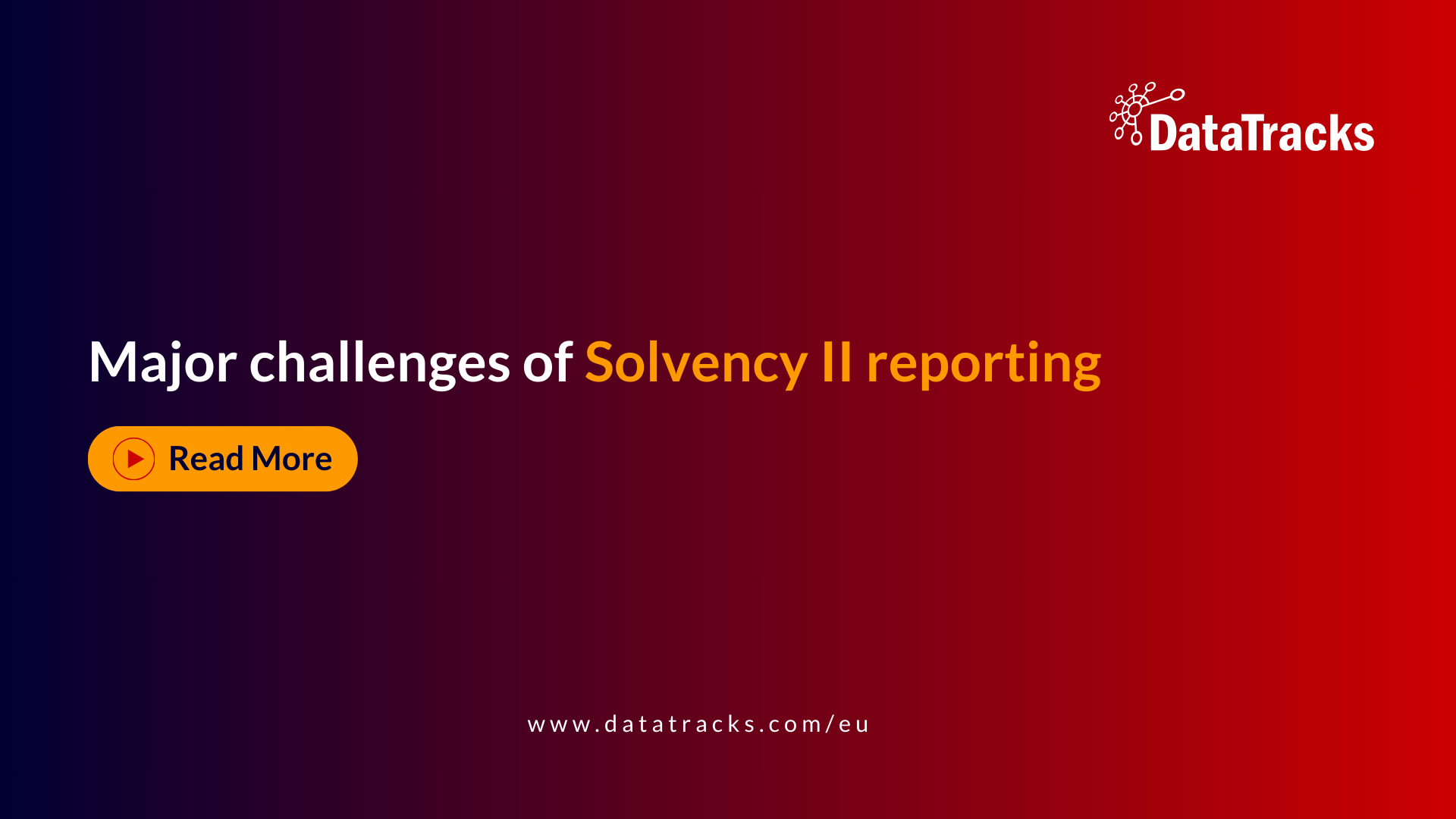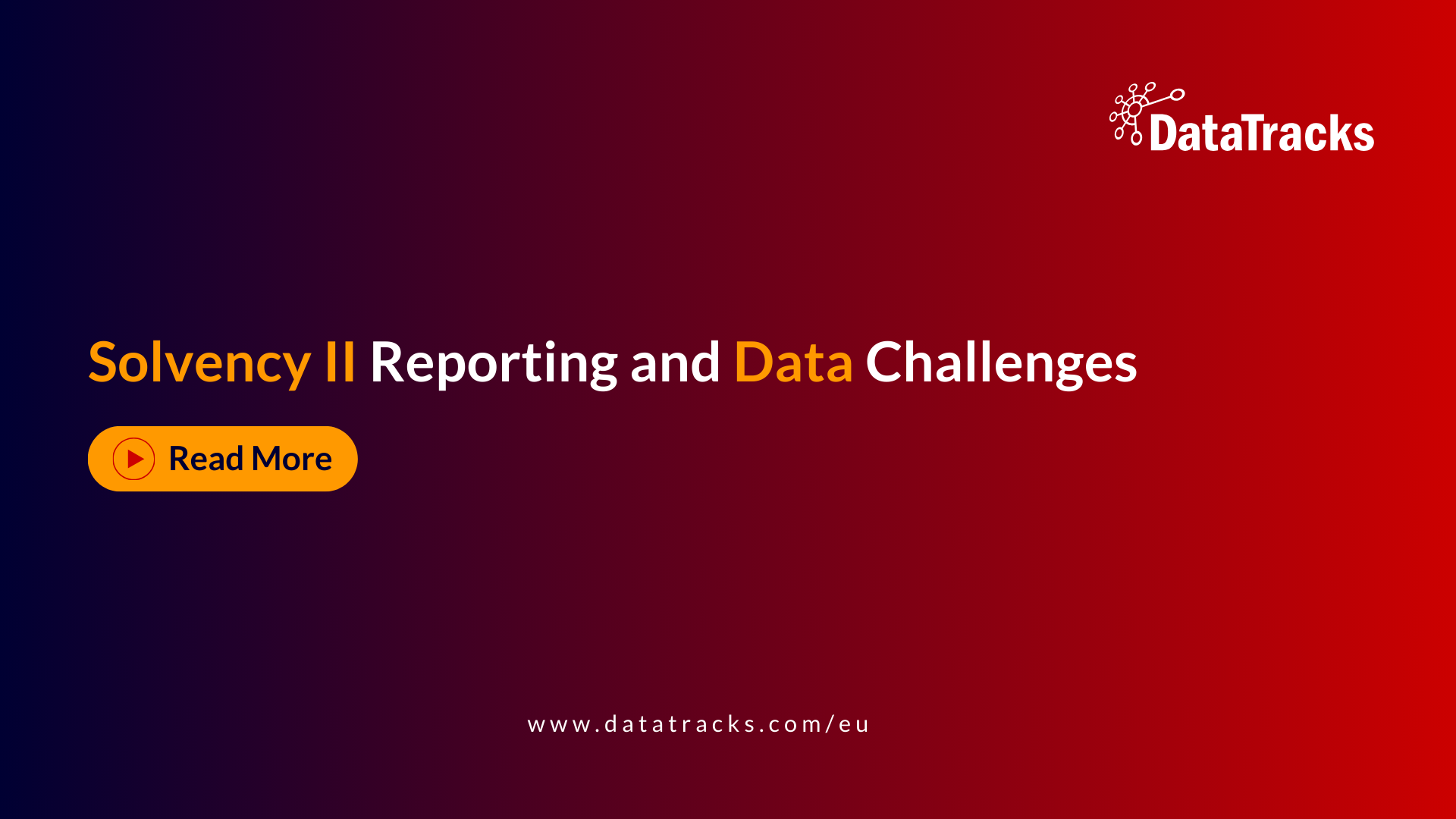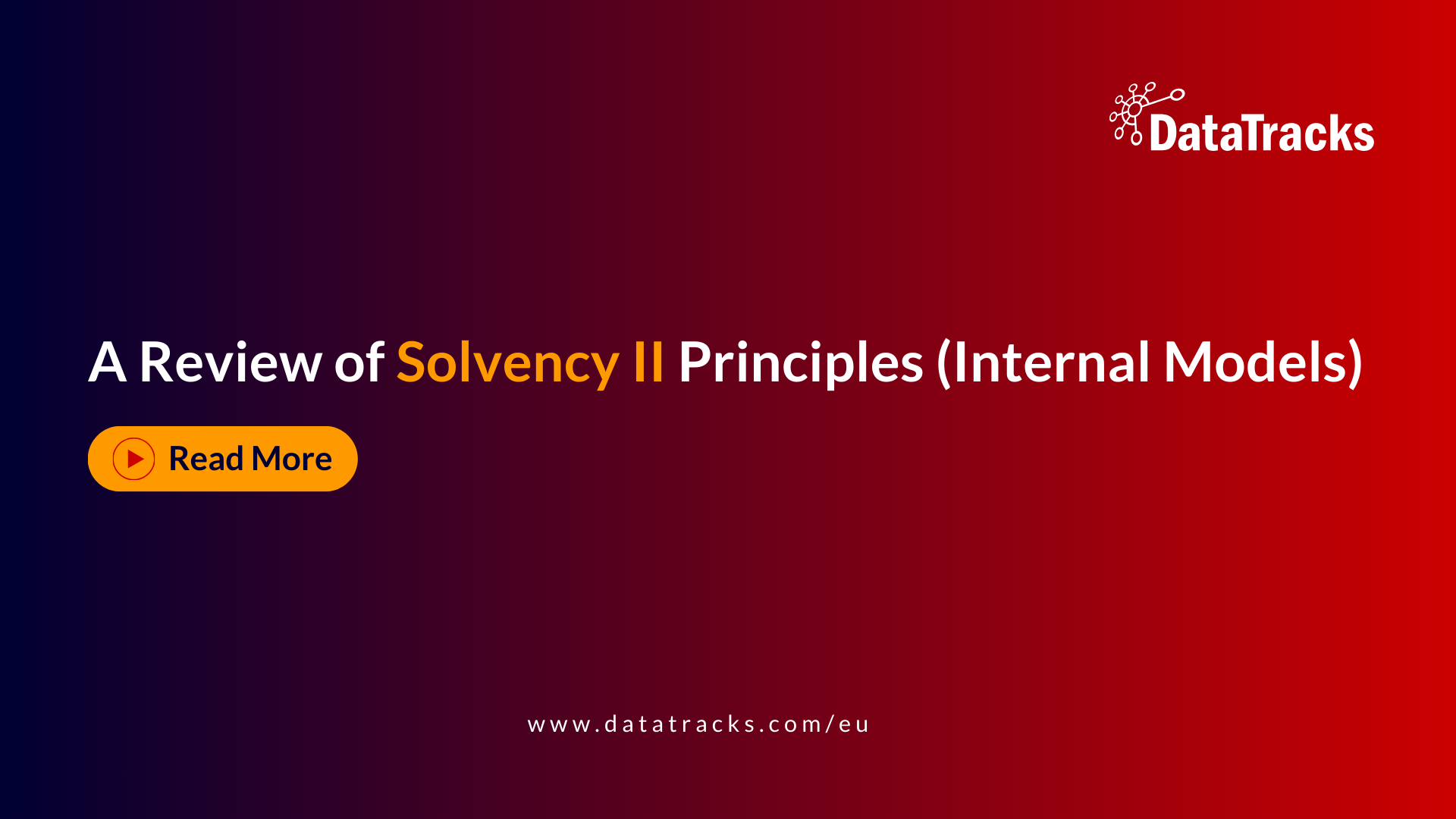Solvency II Reporting and Data Challenges
The new Solvency II regulatory framework has been widely labelled as a “data nightmare” for insurance and reinsurance undertakings, and rightly so. The complexity of the data quality and reporting requirements raises significant challenges for insurance firms and their asset managers. Here are the key issues they face:
Internal Data Challenges
- Balance Sheet Data Review: Insurance firms need to review balance sheet data to decide between using an Internal Model or the Standard Formula for calculating solvency capital, and to develop capital optimization strategies.
- Data Frameworks: Existing data frameworks must be assessed and potentially adapted to handle the increased granularity required for reporting.
- Reporting Frequency: Firms must ensure their data frameworks can comply with the more frequent quarterly reporting requirements, which need to be completed within five to ten days of each quarter’s end.
- Public and Regulatory Disclosure: Insurance firms must disclose both qualitative and quantitative data in the Solvency and Financial Condition Report (SFCR) to the public and in the Regulatory Supervisory Report (RSR) to National Competent Authorities (NCAs) annually, with a summary every year and a full report every three years.
Data Sources Challenges
- Sourcing Data: Gathering the required data from various sources, such as investment management firms, market data vendors, pricing vendors, and custodians, is a significant challenge. Insurance firms must coordinate with these third parties to ensure timely and accurate data collection.
- Non-Uniform Data: European Economic Area (EEA) insurance groups must process non-uniform data for group reporting, requiring data from performance engines, clients, accounting, back office functions, and credit ratings agencies.
- Data Validation and Mapping: The data must be sourced, validated, and mapped within short time frames to meet reporting deadlines, with different asset data requirements for quarterly and annual reporting periods.
Data Requirements of the Three Pillars
- Pillar I – Quantitative Requirements:
- Covers capital and investment rules.
- Requires data for calculating the Solvency Capital Requirement (SCR) and Minimum Capital Requirement (MCR).
- Data must be identified and sourced for various risk modules (non-life underwriting, life underwriting, health, market, counterparty default, intangible asset, operational) and sub-risk modules (correlation coefficients, interest rate, equity, property, spread, market risk concentrations, currency).
- Pillar II – Supervisory Review:
- Involves internal management controls.
- Requires data for the Own Risk and Solvency Assessment (ORSA).
- Pillar III – Disclosure Requirements:
- Focuses on risk and capital levels.
- Requires a forward-looking methodology to populate the Quantitative Reporting Templates (QRTs).
- The look-through approach, which includes underlying assets of collective investment undertakings and other packaged investments, can be particularly challenging for accurate data identification and sourcing.
Insurance firms must address these data challenges to comply with Solvency II requirements effectively. This involves not only the accurate collection and processing of data but also the implementation of robust data management and reporting systems.
Data Quality Requirements
Under Solvency II, Member States are required to ensure that Insurance Firms have internal processes and procedures in place that can ensure the appropriateness, completeness, and accuracy (ACA) of the data that is used in the calculation of technical requirements. These three characteristics are the criteria that are used to calculate the quality of the data used. Data is considered to be appropriate “if it is suitable for the intended purpose (e.g. the valuation of technical provisions, setting of assumptions) and relevant to the portfolio of risks being analysed (i.e. directly relates to the underlying risk drivers)”.
[1] Data is considered to be complete where it includes sufficient historical information to assess the characteristics of the underlying risks and to identify risk trends, and such data allows for the recognition of all relevant homogenous risk groups used in the calculation of Solvency II technical provisions.
[2] Data is considered to be accurate where it is free from material errors, data from different time periods used for the same estimation are consistent, and it is recorded in a timely manner and consistently over time.
[3] In addition to ensuring data quality, Insurance Firms must put in place a data quality management framework that allows for the definition of data, assessment of data quality, resolution of material problems identified, and the continuous monitoring of data quality.
The data quality requirements may prove to be significantly challenging for Investment Firms that deal with a large number of third party data holders. With a large number of asset data fields to be populated, increased granularity of the data required, and new data required to be sourced, Insurance Firms may find it difficult to uphold Solvency II data quality requirements, e.g. in terms of transparency of data processing, audit trails, auditor data assessment, reliable data policies, and robust and reliable metrics for the ACA data requirements.
Mapping of Data for Solvency II Reporting
Mapping the data required for Solvency II reporting poses a significant challenge for many insurance firms. Here are the key points to consider:
Data Sourcing and Classification
- Multiple Data Sources: Insurance firms must source data from various third-party data holders, each potentially using different definitions, rules, or classification systems.
- Financial Instruments and Assets: Firms need to identify and classify financial instruments and assets, then map these to the new European Insurance and Occupational Pensions Authority (EIOPA) Data Point Model (DPM) and XBRL Taxonomy.
Classification Systems
- Complementary Identification Codes (CICs):
- Used to classify financial instruments based on asset country listings, instrument types, and risk types.
- A challenge arises when asset managers classify the same assets in different CIC categories, leading to potential reporting errors.
- NACE Classification:
- The ‘Nomenclature statistique des Activités économiques dans la Communauté Européenne’ is used for industry sector classification.
Challenges in Mapping
- Conflicting Taxonomies:
- Insurance firms must address conflicting taxonomies while classifying existing portfolios, which typically include millions of financial instruments, to the Solvency II XBRL Taxonomy to map to the complex QRT fields.
- Third-Party Data Vendors:
- To mitigate these challenges, insurance firms may opt for third-party data vendors that offer Solvency II data feeds. These vendors help map financial instruments to the EIOPA Taxonomy, ensuring consistency and reducing the likelihood of errors.
Practical Steps for Effective Data Mapping
- Standardize Data Definitions: Establish standard data definitions across all data sources to ensure consistency.
- Automate Data Mapping: Utilize automated tools and software solutions designed for Solvency II reporting to streamline the data mapping process.
- Regular Audits: Conduct regular audits of data mapping processes to identify and correct discrepancies promptly.
- Collaborate with Data Vendors: Work closely with third-party data vendors to ensure they provide data that aligns with Solvency II requirements.
- Training and Support: Provide comprehensive training for staff involved in data mapping to ensure they understand the complexities of Solvency II reporting requirements.
By addressing these challenges through a combination of standardization, automation, collaboration, and continuous improvement, insurance firms can more effectively manage the data mapping process required for Solvency II reporting.
Technology
Given the sheer breadth of the new Solvency II reporting requirements, in terms of increased granularity of data, volume of data, and regular reporting deadlines, it would seem to be the case that many Insurance Firms are choosing to pass reporting obligations on to their asset management firms, to outsource their reporting obligations to third party Solvency II reporting firms, or to use Solvency II to catalyse the implementation of more effective data management systems and technologies. The choice an Insurance Firm makes in practice may be dictated by a large range of pertinent factors. A Solvency II data and systems report published by Ernst & Young found that the maturity of Solvency II data workstreams varied widely from insurer to insurer. [4] It was found that some insurance firms had already implemented data workstreams by moving from gap analysis to solution design. [5] Other Insurance Firms had commenced re-planning data workstreams from the bottom-up, whereas most other Insurance Firms were somewhere in between, struggling in certain areas and making headway in others.[6] The report found that common themes included that many Insurance Firms believed wholesale remediation of front-end policy systems was not feasible owing to the exorbitant cost and time required, that many Insurance Firms were making significant investments of time in order to investigate the advantages and disadvantages of enterprise data warehousing solutions, and that there was a lack of focus on Solvency II technology remediation programmes.[7] Celent proposes that internal systems developed by Insurance Firms cannot benefit from vendor driven innovation, that IT vendors can provide helpdesk support, and that IT vendors can keep Solvency II solutions up to date with the latest regulations.[8]
If you would like to discuss any of the implications of Solvency II on your business, or for more information on our Solvency II reporting solutions and prices, please email DataTracks at: enquiry@datatracks.eu.
[1] CEIOPS (2009). CEIOPS’ Advice for Level 2 Implementing Measures on Solvency II: Technical Provisions – Article 86 f Standards for Data Quality (October) (CEIOPS-DOC-37/09), p.8.
[2] CEIOPS (2009)., p.8.
[3] CEIOPS (2009)., p.9.
[4] Ernst & Young (2011). Getting up to speed Solvency II data and systems. EYGM Limited.
[5] Ernst & Young (2011), p.2.
[6] Ernst & Young (2011), p.4.
[7] CEIOPS (2009). CEIOPS’ Advice for Level 2 Implementing Measures on Solvency II: Technical Provisions – Article 86 f Standards for Data Quality (October) (CEIOPS-DOC-37/09), p.8.
[8] CELENT (2012). Solvency II IT Vendor Spectrum. (June) Celent, a division of Oliver Wyman, Inc., pp.10-11.
Conclusion
DataTracks provides a comprehensive Solvency II reporting software solution that addresses the complex data challenges faced by insurance firms. Our software ensures seamless data integration, automated mapping to EIOPA DPM and XBRL Taxonomy, and adherence to CIC and NACE classifications. With robust validation, auditing features, and support for regulatory deadlines, DataTracks’ solution enhances data quality and compliance, allowing firms to navigate Solvency II reporting requirements efficiently and effectively.



